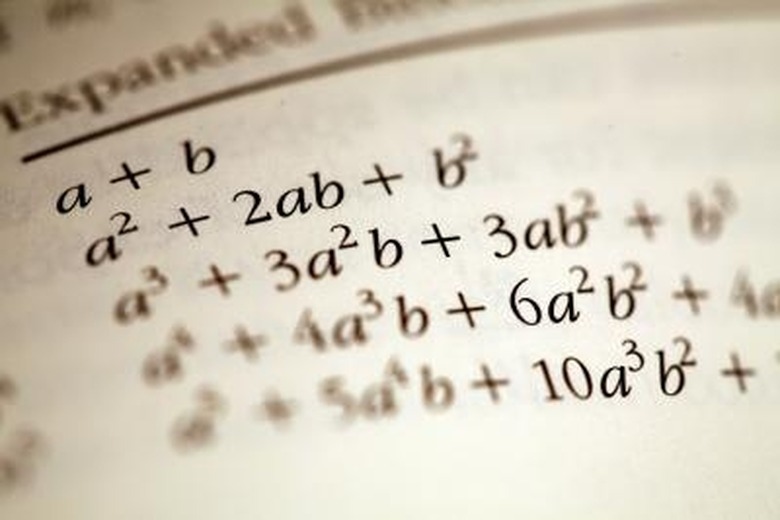How To Identify Prime Polynomials In Algebra
An algebra student gets stuck when exhausting all factoring steps, can't find the answer, but forgets to consider a prime polynomial. These polynomials, like prime numbers, are in lowest common terms and you cannot factor them further. Here is how you recognize such an equation.
Step 1
Go through all the usual steps for factoring. First check for common monomial factors.
Step 2
Try the special formulas for factoring perfect squares, and then use the first formula for factoring a second-degree polynomial, x^2 + Bx + C, and see if it works.
Step 3
Apply the other special formula for factoring a second-degree polynomial of the form: Ax^2 + Bx + C.
Step 4
Exhaust all normal steps of factoring before deciding that you have a prime polynomial on your hands.
Step 5
Use the following as an example to help you learn to identify any prime polynomials you may come across: x^2 + 2x + 8. Set up a pair of two parentheses with the x's in place: (x + )(x + )
Step 6
Look for two numbers whose product is 8 and sum is 2. Check for the 2 and 4 when both are either plus or both are minus, for 8. Try 1 and 8 with both plus or minus for the positive 8. None of these four sets of numbers equal 2.
Step 7
Declare the polynomial equation prime. You have looked at every possible way to factor the equation. It does not factor by a Greatest Common Factor or by special formulas. You have a prime polynomial on your hands.
Cite This Article
MLA
Contributor, . "How To Identify Prime Polynomials In Algebra" sciencing.com, https://www.sciencing.com/identify-prime-polynomials-algebra-2265204/. 24 April 2017.
APA
Contributor, . (2017, April 24). How To Identify Prime Polynomials In Algebra. sciencing.com. Retrieved from https://www.sciencing.com/identify-prime-polynomials-algebra-2265204/
Chicago
Contributor, . How To Identify Prime Polynomials In Algebra last modified August 30, 2022. https://www.sciencing.com/identify-prime-polynomials-algebra-2265204/
